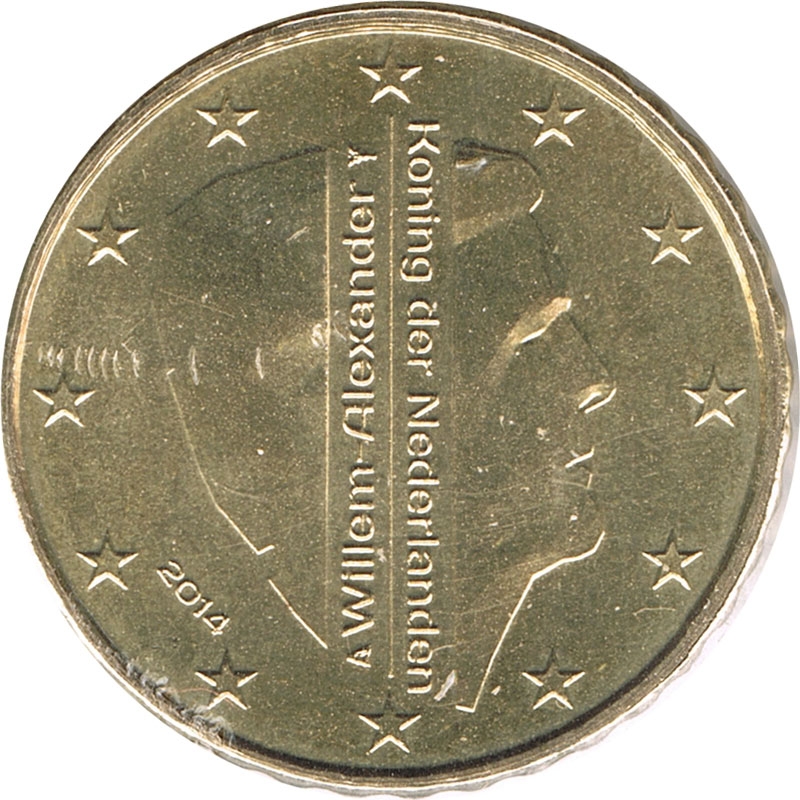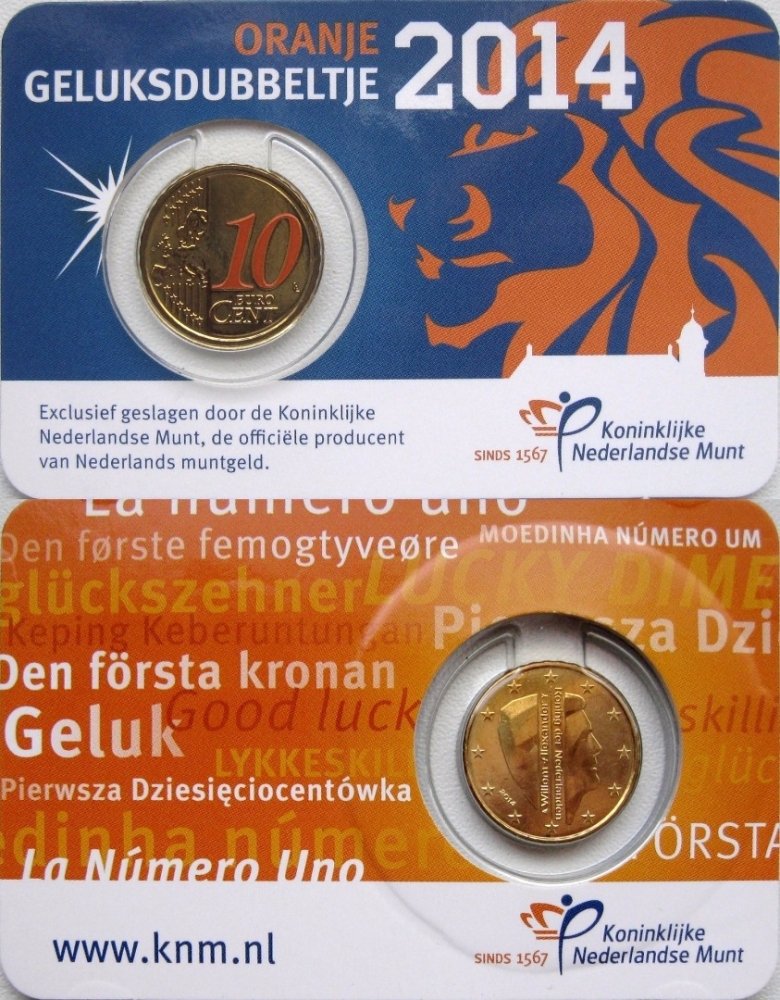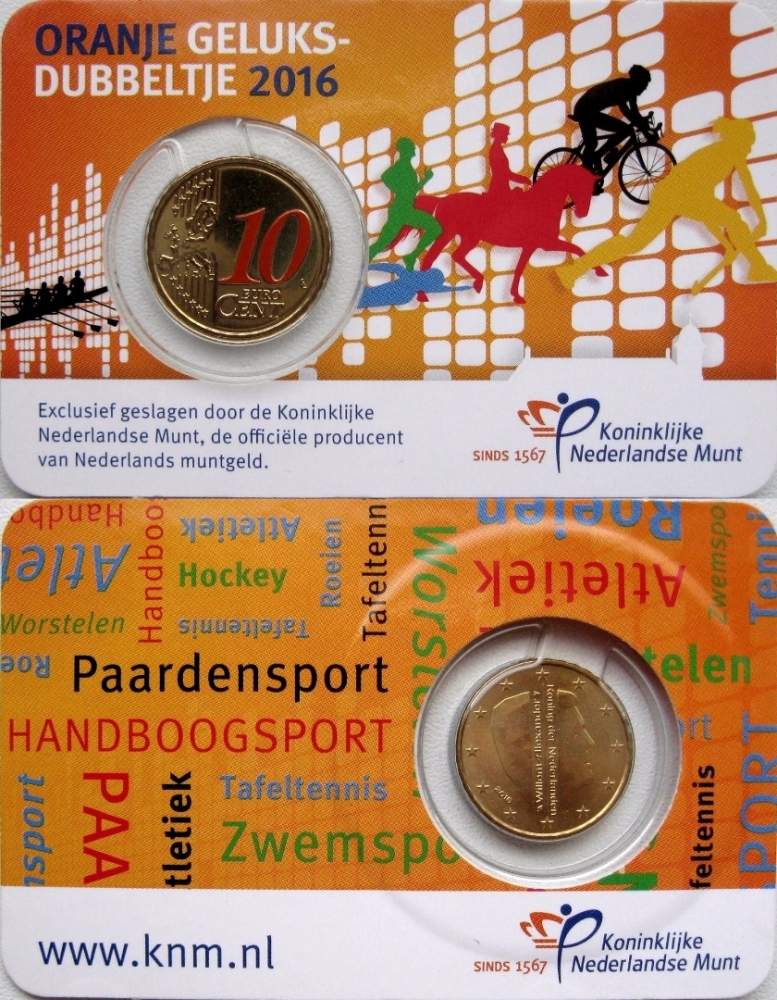You are about to finish your registration. Please check your mailbox (including spam folder). There should be a letter with a confirmation link. Check setting to make sure that your e-mail address is correct.
Send letter againDescription
Colored 10 Euro Cents have a name Geluksdubbeltje or Lucky Dubbeltje. A dubbeltje is coming from an old Dutch silver coin Double Stuiver. The 10 euro-cent coin is currently also called a dubbeltje in the Netherlands.
The first issue was carried out May 14, 2012 in honor of the World Cup. The second edition was a first colored 10 Euro Cents of King Willem-Alexander in February 2014. At this time, a Geluksdubbeltje was supposed to bring good luck at international sporting events like the Winter Olympics in Sochi and the World Cup in Brazil. In April 2016 it took place the third edition of Geluksdubbeltje, timed to coincide with the Summer Olympics in 2016 in Rio de Janeiro.
Obverse

|
A stylised profile of King William-Alexander surrounded by 12 stars. The effigy is separated in two parts by an area with a vertical line. At the left of the vertical line, reading from bottom to top, the mark of the National Mint Director, the text "Willem-Alexander" and the Royal Dutch Mint mark. At the right of the vertical line, reading from top to bottom, the title "King of the Netherlands" in Dutch. At the bottom left of the effigy the year of issuance. Willem-Alexander |
|---|---|
Reverse

|
The coin’s numeral of “10” euro-cent has an Orange color, symbolic for the Dutch National team whose colors are also orange and the name of reigning royal dynasty (Orange-Nassau). 10 |
| Edge |
Characteristics
| Type | Commemorative Issue (Non-circulating) |
| Material | Nordic Gold |
| Weight | 4.1 g |
| Diameter | 19.75 mm |
| Thickness | 1.93 mm |
| Shape |
|
| Alignment | Medal |
| Mint |
Royal Dutch Mint (KNM)
|






_Euro_Cup_in_Poland_and_Ukraine_2012_09.02.2017_00.35-125.jpg)
_Euro_Cup_in_Poland_and_Ukraine_2012_09.02.2017_00.35_01-125.jpg)